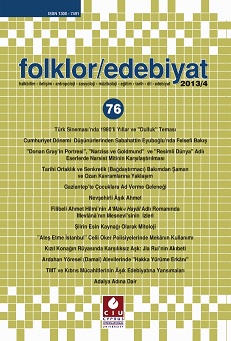Filibeli Ahmet Hilmi’nin A‘Mak-I Hayâl Adli Romaninda Mevlânâ’nin Mesnevî’sinin İzleri
Traces of Mevlânâ’s Mesnevî in Filibeli Ahmed Hilmi’s Novel of A‘Mak-I Hayâl
Author(s): Gökhan TunçSubject(s): Metaphysics, Novel, Turkish Literature, Philosophy of Language
Published by: Uluslararası Kıbrıs Üniversitesi
Keywords: Mevlânâ; Mesnevî; Filibeli Ahmet Hilmi; A’mak-ı Hayal; visual image;
Summary/Abstract: In this article, the chapter in Mevlana’s Mesnevi called “Sineğin Gevşek Tevilinin Değersizliği” and the chapter in Filibeli Ahmet Hilmi’s A’mak-ı Hayâl called “Zeyl-i A’mak-ı Hayal” will be evaluated with an intertextual approach. Firstly, by considering Mevlana’s work, visual images formed by using double contrasts in order to criticize those who radically interpret Quran will be mentioned. In this context, it will be evaluated why Mevlana has chosen extreme examples of double contrasts such as “fly-phoenix” and “urine-sea” by considering their meanings and functions. Secondly, the work of Filibeli Ahmet Hilmi will be evaluated so as to demonstrate how he used similar visual images with Mevlana by using Mesnevi in order to criticize an interpreter of natural sciences. In the “Zeyl-i A’mak-ı Hayal” chapter of his book A’mak-ı Hayâl, Filibeli Ahmet Hilmi focuses on the discussions during the Second Constitutional Era concerning materialism and metaphysical thought by using the novel’s central character Raci. The character defends the metaphysical thought and criticizes the understanding that seeks solutions of all problems in science and defines metaphysics as “quackery”. Thus Mevlana’s metaphor of fly on urine to criticize those who radically interpret Quran, this time, is used by Filibeli Ahmet Hilmi to criticize the defender of natural sciences. However Mevlana’s fly metaphor about arrogant people is transformed to an ant metaphor by Filibeli Ahmet Hilmi.
Journal: Folklor/Edebiyat
- Issue Year: 19/2013
- Issue No: 76
- Page Range: 99-106
- Page Count: 8
- Language: Turkish

